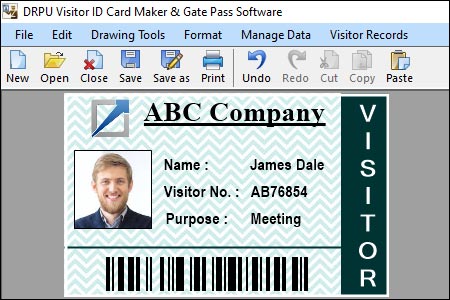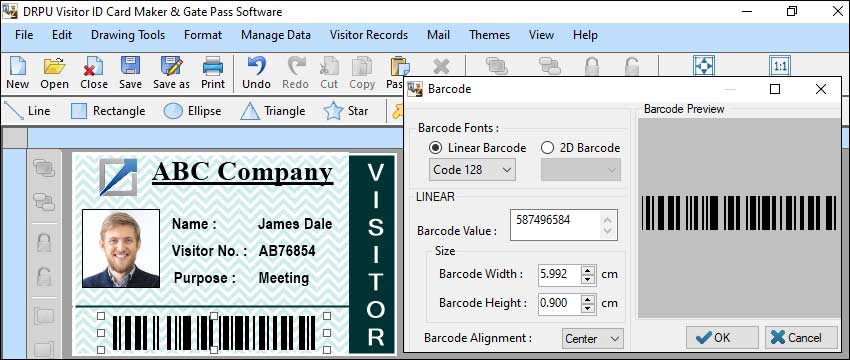Track Attendance Using Gate Passes Created Using a Gate Pass Maker
Tracking attendance using gate passes created using a gate pass maker is not a conventional method of attendance tracking. Typically, gate passes are used for granting temporary access to restricted areas or for managing visitor entry and exit.
Gate passes can be utilized in an attendance tracking system by incorporating certain features and integrating them with other tools or systems. Here's a detailed explanation of how it could work:
-
Gate Pass Creation:
A gate pass maker tool can be used to generate unique gate passes for individuals. Each gate pass should have a barcode, QR code, or other machine-readable elements for identification purposes.
-
Attendance Management System:
Set up an attendance management system that can receive and process gate pass data. This system could be a software application or a web-based platform.
-
Gate Pass Scanning:
When individuals arrive at the attendance location, their gate passes are scanned using barcode or QR code readers. The scanner captures the unique identifier encoded in the gate pass and transmits it to the attendance management system.
-
Database Integration:
The attendance management system should be integrated with a database that stores information about individuals, such as their names, identification numbers, and any other relevant details.
-
Attendance Recording:
Upon scanning a gate pass, the attendance management system matches the unique identifier with the corresponding individual in the database. It then records the timestamp and marks the individual as present.
-
Real-time Updates:
The attendance management system should update attendance records in real-time, allowing administrators or authorized personnel to monitor attendance data immediately.
-
Reporting and Analysis:
The attendance management system can generate reports and provide analytics based on the attendance data collected. This can include attendance summaries, individual attendance records, and other relevant statistics.
Important Note: It's important to note that this method requires appropriate hardware (such as barcode or QR code scanners) and software development or integration to create a functional attendance tracking system. Additionally, gate passes generated by a gate pass maker tool would need to be linked to a centralized attendance management system for effective tracking.
Usage of Gate Passes for Security Purposes
Gate passes created using a gate pass maker can be used for security purposes to a certain extent, primarily for controlling access to restricted areas or managing visitor entry and exit. However, it's important to note that gate passes alone may not provide comprehensive security and should be considered as part of a broader security strategy. Here's a detailed explanation of how gate passes can be used for security purposes:
-
Restricted Area Access:
Gate passes can be used to grant temporary access to specific areas within a facility that are restricted to authorized personnel only. Gate passes can be created for employees, contractors, or visitors who need temporary access to these areas. The gate passes can specify the authorized time duration and the specific areas the individual is permitted to enter.
-
Visitor Management:
Gate passes can be used to manage visitor entry and exit within a facility. When visitors arrive, they can be issued gate passes that include their identification details, purpose of visit, and any other relevant information. The gate passes can be used to track the movement of visitors within the facility and ensure they are authorized to be present.
-
Identification and Verification:
Gate passes can serve as identification documents for individuals accessing a facility. The passes can include personal details, such as name, photograph, designation, or identification number. By visually inspecting the gate passes, security personnel can quickly verify the identity of individuals entering or exiting the premises.
-
Authentication and Authorization:
Gate passes can incorporate security features like barcodes, QR codes, or other machine-readable elements. These codes can be scanned by security personnel at checkpoints to authenticate the validity of the gate pass and ensure that the individual carrying it is authorized to access the facility or specific areas.
-
Tracking and Monitoring:
Gate passes can enable the tracking and monitoring of individuals within a facility. By scanning gate passes at various checkpoints, security personnel can keep a record of individuals' movements, ensuring they follow designated paths and do not access unauthorized areas.
-
Temporary Passes:
Gate passes are particularly useful for issuing temporary access to individuals who are not regular employees or contractors. Temporary employees, vendors, or guests can be issued gate passes that are valid for a specific period, granting them limited access to the facility based on their requirements.
It's crucial to assess the specific security needs of a facility and implement a comprehensive security strategy that incorporates gate passes as part of a broader security framework.
Security of Gate Passes Created using a Gate Pass Maker
The security of gate passes created using a gate pass maker depends on various factors, including the design of the gate pass maker software, the materials used for gate pass printing, and the security measures implemented within the system. Here are some considerations regarding the security of gate passes:

-
Design and Authentication Features:
Gate pass makers can incorporate security features to enhance the authenticity and integrity of gate passes. These may include unique serial numbers, holograms, watermarks, or other anti-counterfeiting measures. Such features make it more difficult for unauthorized individuals to create fraudulent gate passes.
-
Access Control:
The gate pass maker software should have proper access controls to limit who can create, modify, or print gate passes. User authentication mechanisms, such as username/password or role-based access control, can help prevent unauthorized access to the gate pass creation process.
-
Data Protection:
Gate pass makers should prioritize data security to protect sensitive information. This includes securely storing personal data collected during gate pass creation and transmission. Encryption protocols and secure storage practices should be implemented to safeguard the data from unauthorized access or breaches.
-
Barcode/QR Code Security:
If gate passes incorporate barcodes or QR codes for identification, it's important to use secure and robust encoding schemes. Strong encryption and verification mechanisms should be employed to prevent tampering or cloning of the codes.
-
Printing and Material Security:
The physical printing of gate passes should be done using high-quality materials and secure printing processes. Tamper-evident features, such as special inks or security patterns, can be used to deter forgery attempts. Additionally, access to printed gate passes should be controlled to prevent unauthorized duplication.
-
Verification Mechanisms:
Gate passes can be designed with verification mechanisms, such as barcode or QR code scanning, to allow security personnel to quickly authenticate the passes. These mechanisms should be integrated with secure systems that can verify the validity of the gate passes in real-time.
-
Audit Trail:
A gate pass maker system can maintain an audit trail of gate pass creation, modification, and usage. This helps in tracking any suspicious activities or unauthorized access attempts, providing a level of accountability.
Conclusion:While gate passes created using a gate pass maker can incorporate security measures, it's important to acknowledge that no security system is entirely foolproof. Determined individuals with sufficient resources and skills may still attempt to counterfeit or manipulate gate passes. Therefore, it's advisable to implement additional security measures, such as surveillance cameras, access control systems, and trained security personnel, to complement the gate pass system.
Regular reviews, updates, and testing of the gate pass maker software and security protocols are essential to address any potential vulnerabilities and ensure ongoing security.